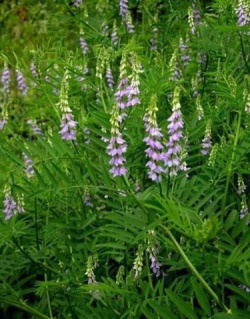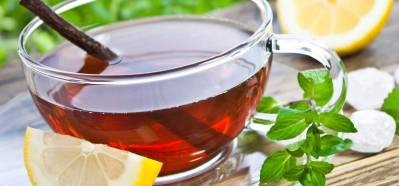
Licorice plant
General Plant information:
- Family: Fabaceae (legume family)
- Latin Name: Glycyrrhiza Glabra (taken from Greek word for ‘sweet root’)
- Common names: licorice, liquorice, sweet wood, licorice root
- Perennial herb
- Origin: native to Eurasia, Northern Africa and Western Asia
- Habitat: dry, open scrubland, damp ditches or near streams. Often in nitrogen rich soils
Identifying Characteristics:
- Stem: sticky, hairy, and up to 1 m in height
- Leaves: arranged in pairs along central axis with a single leaflet pointing outwards at the end.
- Flowers: light blue/violet held in loose cone-like spires each consisting of 10 or more individual flowers.
- Fruits: Pods that are reddish-brown 1-3 cm long. Each pod contains 2-5 brown/black seeds.
Traditional Uses:
- Root has been used since very ancient times as a flavoring and for its expectorant and anti-inflammatory properties in the treatment of coughs and colds.
- Used extensively in ancient Chinese medicine, Ayurveda medicine (India), and Kampo medicine (Japan).
- In folk medicine, it was used as a laxative, contraceptive, anti-asthmatic drug, and antiviral agent.
- Other traditional uses include anemia, gout, sore throat, tonsillitis, fever, skin diseases, bronchitis, anxiety etc.
- Preparation: fresh or dried roots made into a tea or tincture.

Chemical Constituents:
- Triterpenoidal saponin
- Glycyrrhizin-responsible for the sweet flavor (50x sweeter than sugar).
- Flavonoids
- Tannins
- Alkaloids
- Phenolic compounds
Uses Today
- Unfortunately, a great deal of the licorice candy made today contains little to no licorice at all due to its potential toxic effects. Much of the candy consists of anise oil which has a similar sweet taste but is much less harmful to consume.
- The United States imports millions of pounds of licorice from the Mediterranean regions.
- 90% of the imported licorice is used in the flavoring of tobacco products (cigarettes, cigars, and pipe tobaccos).
- It’s also used as an ingredient in various pharmaceuticals, especially throat lozenges.
Current Research:
—There is currently a lot of research being done with licorice–
- Anti-Ulcer potential: Study looked at licoflavone from licorice root and its role in ulcer treatment. The study indicated that licoflavone plays a role in the treating of gastric ulcers in rats by mediating inflammation mediators and amino acid metabolism.
- Cancer Study: Looked at licoricidin (LCD) in licorice root and its anti-cancer properties in mice. Study indicated that LCD could inhibit colorectal cancer cells by apoptosis and autophagy. Concluded that it is a potential chemotherapeutic agent against colorectal cancer.
- Asthma treatment: Study looked at a licorice based formula popular in Chinese medicine and its effects on experimental allergic asthma in mice. They concluded that the formula had good therapeutic effects in the mice with induced asthma and that it could be used as a treatment for asthma in humans.
** Warning: It has been reported that excessive licorice consumption can lead to cardiac dysfunction and severe hypertension.
Online Sources
- http://powo.science.kew.org/taxon/urn:lsid:ipni.org:names:496941-1
- http://www.anniesremedy.com/glycyrrhiza-glabra-licorice-root.php
- https://www.researchgate.net/publication/305722644_GLYCYRRHIZA_GLABRA_FOR_TRADITIONAL_USES_AND_PHARMACOLOGICAL_ACTIONS_Corresponding_author
- https://www.ncbi.nlm.nih.gov/pubmed/28287417
- https://www.ncbi.nlm.nih.gov/pubmed/28159726
- https://www.ncbi.nlm.nih.gov/pubmed/28416456
Other Sources
Varro, Tyler E., and Steven Foster. Tyler’s Honest Herbal: A Sensible Guide to the use of herbs & related remedies. 4th ed. New York: MJF , 1999. Print.
Page Created By: Katherine Connelly






